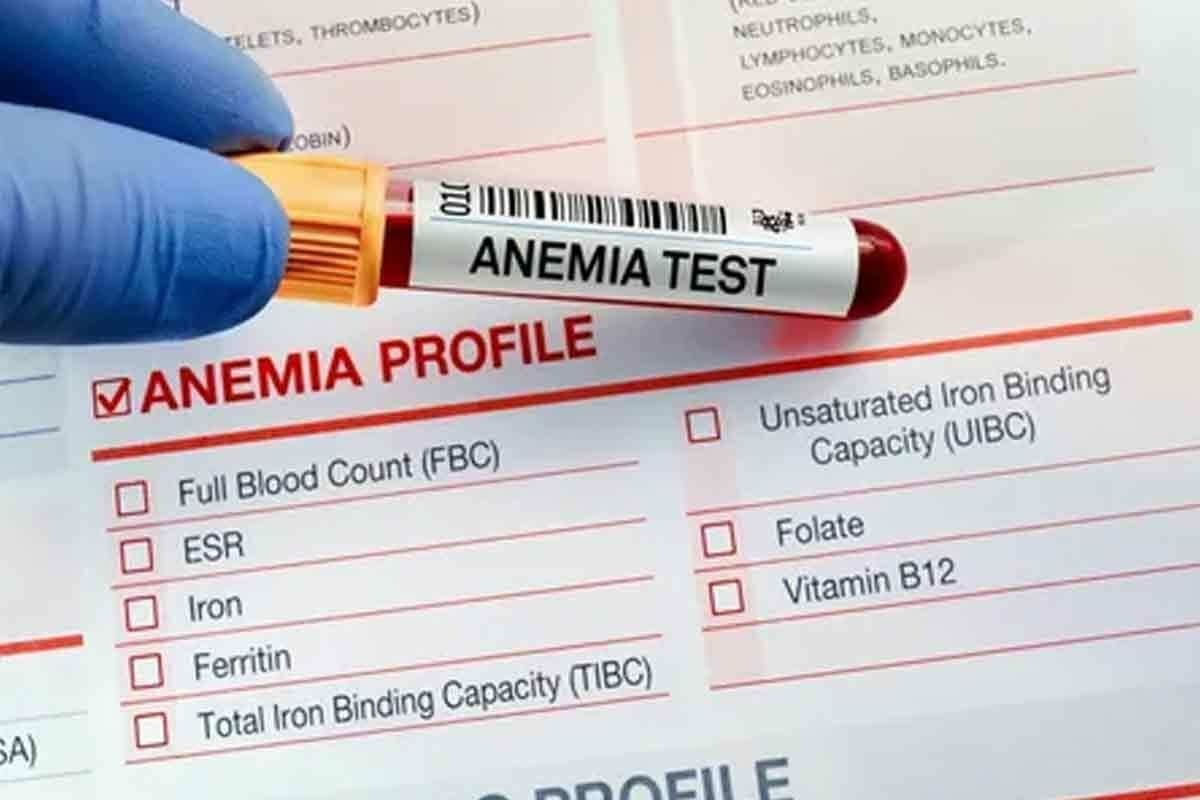Last Updated on November 26, 2025 by Bilal Hasdemir

Herniated disc pain can really hurt and make life hard. At Liv Hospital, we know how tough it is. We offer top-notch treatments to help manage it.
Interlaminar epidural steroid injections (IESIs) are a good choice for herniated disc pain. They work well for symptoms like sciatica or arm pain. Spine-Health says over 50% of patients get some relief from these injections.
We check if IESIs are the right choice for you. We make sure every step is safe, precise, and ethical.
Key Takeaways
- IESIs are a minimally invasive outpatient procedure used to reduce inflammation and pain caused by herniated discs.
- More than 50% of patients experience pain relief after receiving a lumbar epidural steroid injection.
- Liv Hospital is committed to providing globally trusted, patient-centered care.
- Our expert care teams carefully assess the suitability of IESIs for each patient.
- Safety, precision, and ethical standards guide every step of the treatment process.
What Is an Interlaminar Epidural Steroid Injection for Herniated Discs?

Herniated discs can cause a lot of pain by irritating nerves. Interlaminar epidural steroid injections are a helpful treatment. They put corticosteroid and local anesthetic into the epidural space to target the pain.
The Anatomy of a Herniated Disc
A herniated disc happens when the soft inner gel leaks out through a tear. This can irritate nerves, leading to pain, numbness, or weakness in the back or legs. Knowing how a herniated disc works helps us understand how IESIs help.
How Steroids Target Disc-Related Inflammation
The steroid in IESIs reduces inflammation around the nerves. This helps decrease swelling and irritation, easing pain and improving mobility. The local anesthetic also gives immediate pain relief, making recovery easier.
Difference Between Interlaminar and Transforaminal Approaches
There are two main ways to do epidural steroid injections: interlaminar and transforaminal. The interlaminar method puts the needle between two laminae, usually at the midline or slightly off. It covers more of the spinal canal. The transforaminal method targets the nerve root as it leaves the spinal canal, giving more focused relief.
| Characteristics | Interlaminar Approach | Transforaminal Approach |
| Needle Placement | Between adjacent laminae | Through the foramen, targeting the nerve root |
| Coverage Area | Broader coverage of the spinal canal | More targeted, specific nerve root |
| Typical Use | Central disc herniations or bilateral symptoms | Unilateral radiculopathy or specific nerve root irritation |
The Procedure: What to Expect During Your IESI

Getting ready for an Interlaminar Epidural Steroid Injection (IESI) can make a big difference. We’ll walk you through what happens before, during, and after the procedure. This way, you’ll know what to expect every step of the way.
Pre-Procedure Preparation and Screening
Pre-procedure preparation is key. You’ll have a detailed medical history review and a physical check-up. This helps us understand your health and how bad your pain is.
We’ll also look at your current medications. Some might need to be changed or stopped before the procedure.
- Tell your doctor about any allergies or sensitivities, like to steroids or contrast dyes.
- Share your medical history, including any bleeding disorders or infections.
- Follow any special instructions about fasting or changing your medications.
The Injection Process and Fluoroscopic Guidance
The IESI procedure usually takes less than 15 minutes. It’s done under fluoroscopic or X-ray guidance for accuracy. This makes sure the steroid goes exactly where it needs to.
You’ll lie on your stomach on an X-ray table during the procedure. The area where the needle goes will be cleaned and numbed. Then, the doctor uses X-rays to guide the needle into the right spot and injects the steroid.
Immediate Post-Procedure Care
Right after, you’ll be watched for any quick reactions. Most people can go back to normal activities the next day. OC Wellness Physicians Medical Group suggests a short walk to help with circulation and prevent stiffness.
- Rest for the rest of the day and avoid hard activities.
- Use ice on the injection site if it hurts.
- See your doctor as planned to check how the treatment is working.
Knowing what to expect from the IESI procedure can help you prepare better. This can make your treatment and recovery smoother, leading to better results.
Benefits of Epidural Steroid Injections for Disc Herniation
Epidural steroid injections are a key treatment for disc herniation. They help reduce pain and improve movement. This is great for those with chronic back pain and nerve issues.
A study by New York Spine Specialist found over 80% of patients with sciatica from disc herniation got relief. The steroid’s anti-inflammatory effect can start working in 2 to 3 days for many.
Pain Relief Mechanisms and Timeline
Epidural steroid injections work by reducing nerve root inflammation. Steroids, like corticosteroids, are strong anti-inflammatory agents. When injected, they help decrease swelling and nerve irritation.
Relief usually starts within 2-3 days and can last weeks to months. This depends on the condition’s severity and how well the treatment works.
Reduction of Nerve Root Inflammation
Nerve root inflammation from disc herniation causes pain. Epidural steroid injections target this inflammation. They reduce swelling and pressure on nerves, providing relief.
“The use of epidural steroid injections has been a game-changer for many patients suffering from disc herniation, providing a significant reduction in pain and improvement in quality of life.”
Improved Mobility and Functional Outcomes
Epidural steroid injections help by reducing pain and inflammation. This makes it easier for patients to move and function better. It’s important for recovery, allowing for physical therapy and other rehabilitation.
Patients can see enhanced functional outcomes. They can do daily activities better and return to their normal life.
Standard Frequency Guidelines for Epidural Steroid Injections
The frequency of epidural steroid injections depends on several factors. These include the severity of the herniated disc and how well the patient responds to treatment. Knowing these guidelines is key to managing herniated disc pain safely and effectively.
Initial Treatment Protocols
For epidural steroid injections, the first step is usually a series of injections to help manage pain. The American Society of Anesthesiologists suggests starting with one injection to see how the patient reacts. If the patient feels a lot of relief, more injections might be considered based on their condition and response.
Recommended Intervals Between Injections
It’s important to have a gap between epidural steroid injections. A gap of several weeks is often recommended. This break lets doctors check if the previous injection worked well and adjust the treatment plan if needed.
Maximum Number of Injections Per Year
Guidelines say to limit epidural steroid injections to three to four per year. This helps avoid long-term side effects. It keeps the risk of complications low while keeping pain under control.
Lifetime Limitations Considerations
There are lifetime limits on epidural steroid injections to avoid long-term problems. Doctors look at the total dose and frequency of injections over a patient’s lifetime to ensure safety. A study in the Journal of Neurosurgery: Spine shows it’s important to consider the total number of injections a patient gets over their lifetime to avoid risks.
“The goal is to balance the benefits of epidural steroid injections with the possible risks. Treatment should be tailored to each patient’s needs and how they respond to therapy.”
– Journal of Pain Research
| Guideline | Recommendation |
| Initial Treatment | Single injection to assess response |
| Interval Between Injections | Several weeks |
| Maximum Injections Per Year | 3 to 4 |
| Lifetime Limitations | Careful consideration of cumulative dose |
Factors That Influence Safe Injection Frequency
The safe frequency of epidural steroid injections for herniated disc pain varies. It depends on several factors to ensure both safety and effectiveness.
Severity and Location of Disc Herniation
The severity and location of the disc herniation are key. More severe herniations or those in critical areas might need a different schedule than less severe ones.
A study in The Spine Journal found that herniation severity affects injection frequency. The location, whether lumbar or cervical, also plays a role.
| Herniation Severity | Typical Injection Frequency | Considerations |
| Mild | Less frequent injections | Monitoring for progression |
| Moderate | Standard protocol | Adjust based on response |
| Severe | More frequent injections or alternative treatments | Careful monitoring for side effects |
Patient Age and Overall Health Status
Patient age and health status are important. Older patients or those with health issues might need a different injection schedule.
Older adults may be more sensitive to steroids, so injections should be given with caution. Younger patients might handle injections differently, but their health status is also key.
Response to Previous Injections
How a patient responds to previous injections is critical. Those who get a lot of relief might need injections more often. Those who don’t respond as well might need different treatment.
Positive response to initial injections means continuing treatment. Lack of response or side effects might mean trying something else.
Concurrent Treatments and Medications
Other treatments and medications are also important. Patients on other treatments or taking certain drugs might need to adjust their injection schedule. This is to avoid bad interactions or side effects.
For example, those on long-term steroid therapy or chemotherapy might need a special plan. Physical therapy or other pain management can also affect how often injections are given.
Potential Risks of Too Frequent Epidural Steroid Injections
Too many epidural steroid injections can lead to serious problems. They are usually safe, but too many can cause issues. The Journal of Neurosurgery: Spine warns of side effects, bone loss, and weakened immune system.
Steroid-Related Systemic Side Effects
When corticosteroids get into the blood, they can affect the body. This can cause:
- Weight gain from more hunger and water retention
- Mood swings like anxiety or depression
- Insomnia or trouble sleeping
- Higher blood sugar levels, a big worry for diabetics
These effects are more common with more injections. It’s important to watch for them closely.
Bone Density and Fracture Concerns
Too much corticosteroid can weaken bones. This can lead to osteoporosis or a higher risk of fractures. This is a big worry for:
- Older adults with lower bone density
- Those with a history of osteoporosis or fractures
- People on long-term steroids
Immune System Suppression Risks
Corticosteroids can weaken the immune system. This makes it easier to get sick. This is a big worry for:
- People with weak immune systems
- Those on chemotherapy or other treatments that weaken the immune system
- Individuals with ongoing infections
Think carefully about the benefits and risks of these injections.
Local Tissue and Nerve Damage Possibilities
While rare, there’s a chance of damage to local tissues and nerves. This can include:
- Nerve damage causing numbness, tingling, or pain
- Infection at the injection site
- Tissue atrophy or scarring
Using the right technique and guidance can lower these risks.
In summary, while epidural steroid injections can help with herniated disc pain, it’s important to know the risks of too many. Understanding these risks and talking to your doctor can help you make the best choices for your treatment.
How Long Should Pain Relief Last After an Injection?
Many patients ask how long pain relief will last after an epidural steroid injection. The answer varies based on several factors. These include the severity of the herniated disc, the patient’s health, and how well they respond to the treatment.
Typical Duration of Benefit
Spine-Health says pain relief can last from weeks to months after the injection. Some patients see relief for a shorter time, while others enjoy it for longer.
Factors Affecting Length of Relief
Several things can affect how long pain relief lasts. These include:
- The severity and location of the herniated disc
- The patient’s age and overall health status
- The presence of any underlying medical conditions
- The effectiveness of the injection technique
Knowing these factors helps us create treatment plans that fit each patient’s needs.
Signs That Another Injection May Be Needed
If pain relief starts to fade or symptoms come back, another injection might be needed. We watch for signs like increased pain, less mobility, or a return of symptoms before the injection.
When Diminishing Returns Become Concerning
Epidural steroid injections can help with herniated disc pain, but there’s a limit to how many can be safely done. We consider how often injections are given, the patient’s response, and any risks or side effects when deciding on treatment.
By closely watching patient outcomes and adjusting treatment plans, we aim to get the most from injections while keeping risks low.
Special Considerations for Different Patient Populations
Different patient groups face unique challenges with epidural steroid injections for herniated disc pain. Healthcare providers must tailor treatments to meet these needs for safe and effective care.
Diabetic Patients and Blood Sugar Management
Diabetic patients need to watch their blood sugar closely after steroid injections. The American Diabetes Association says they might need to adjust their diabetes plans. This is because steroids can raise blood sugar levels, as studies like (PMC3642757) show.
We advise diabetic patients to work closely with their healthcare team. This is to manage blood sugar levels before and after the procedure.
Elderly Patients and Osteoporosis Concerns
Elderly patients have to deal with extra health issues, like osteoporosis, when getting epidural steroid injections. We must think about the risk of osteoporotic fractures. Steroids can make bones weaker.
Older adults are more likely to face bone health problems from corticosteroids. So, we need to be careful who we treat and how we monitor them.
Patients with Multiple Comorbidities
Patients with many health issues need a detailed treatment plan. When giving epidural steroid injections, we must think about how steroids might affect their other conditions. A detailed check-up before the procedure is key to reduce risks and improve results.
Athletes and Physically Active Individuals
Epidural steroid injections can help athletes and active people with herniated disc pain. But, we must weigh the benefits against the risks to their joints and healing. A team approach, including sports medicine, is important for their care and safe return to activity.
In summary, different patient groups need special care with epidural steroid injections for herniated disc pain. By understanding their unique needs, we can offer safer and more effective treatments.
Monitoring Between Injections: What Your Doctor Should Track
Keeping an eye on things between epidural steroid injections is key. It helps make sure the treatment works well and is safe. We think it’s very important to watch closely to get the best results.
Pain Levels and Functional Improvement Assessment
Doctors should check how much pain patients have and if they can do more things. This tells them if the injections are helping. The Spine Journal says it’s important to watch these things to see if the treatment is working.
Doctors use tools like the Visual Analog Scale (VAS) to measure pain. They also ask patients how they’re doing and check how well they can move and work.
Physical Examination Findings
Regular check-ups are important to see how patients are doing. Doctors look at how well patients can move, their muscle strength, and their nerves. This helps them know if the treatment is working.
These checks also help doctors spot any problems or side effects from the injections.
Imaging Changes in Disc Pathology
Imaging tests like MRI or CT scans are very important. They help doctors see if the disc is getting better. They look at the size and location of the herniation.
| Imaging Modality | Frequency | Purpose |
| MRI | Baseline and as needed | Assess disc pathology and nerve root compression |
| CT Scan | As needed for specific indications | Evaluate bony structures and detect possible complications |
Steroid Exposure Tracking
It’s also important to keep track of how much steroid a patient gets. This means recording the dose and how often they get injections. It helps make sure they don’t get too much.
Tracking steroid use helps avoid problems like osteoporosis or adrenal suppression. These can happen if steroids are used for too long.
By watching these important things, doctors can make sure the treatment works well. They can also keep risks low. This makes epidural steroid injections safe and effective for herniated disc pain.
When to Consider Alternative Treatments for Herniated Discs
If epidural steroid injections don’t help enough, it’s time to look at other options for herniated discs. These injections can help manage pain but aren’t a long-term fix for everyone.
Dealing with ongoing disc pain can be tough. Knowing when to try something else is key.
Signs That Injections Are Not Providing Adequate Relief
If your pain comes back soon after the shot, or if you don’t feel better at all, it’s time to think about other choices. Key signs include:
- Continued or getting worse pain
- Not being able to move as well or do daily tasks
- Needing more pain meds
The American Academy of Orthopaedic Surgeons says if injections don’t work, other treatments might help.
Surgical Options for Persistent Disc Problems
For some, surgery is needed to fix the root of the pain. Surgical choices include:
- Discectomy: Taking out the herniated part of the disc
- Spinal fusion: Joining vertebrae together to stabilize the spine
- Artificial disc replacement: Putting in a fake disc instead of the old one
These surgeries are usually considered after other treatments have been tried.
Non-Invasive Alternative Therapies
Not all alternatives mean surgery. Some non-invasive methods can really help. These include:
- Physical therapy to boost mobility and strength
- Chiropractic care to align the spine
- Acupuncture to help healing
These can be used alone or with other treatments.
Integrative Approaches to Disc Pain
Integrative medicine mixes regular treatments with special therapies. Examples are:
- Mind-body therapies like meditation or yoga
- Nutritional advice to support the spine
- Herbal supplements to fight inflammation
These methods can help manage pain and improve health.
Exploring these alternatives can help patients with herniated discs find a full solution beyond just epidural steroid injections.
Conclusion: Creating a Safe, Effective Treatment Plan for Herniated Disc Pain
Creating a good treatment plan for herniated disc pain needs careful thought. It includes using epidural steroid injections and considering each patient’s needs. The Journal of Pain Research says a mix of treatments works best.
A treatment plan should fit each person’s situation. It should look at the disc’s damage and the patient’s health. Knowing how often to use epidural steroid injections helps make a safe plan. This plan aims to fix the pain’s cause and help it last.
Epidural steroid injections can help by easing pain and reducing swelling. But, it’s key to watch how often they’re used to avoid risks. Working with doctors, patients can make a plan that includes these injections and other treatments. This way, they can manage their pain well.
FAQ
How often can you safely get an interlaminar epidural steroid injection for herniated disc pain?
The safe frequency of interlaminar epidural steroid injections (IESIs) for herniated disc pain varies. It depends on the severity of the herniation, patient age, and response to previous injections. Injections are given at intervals of at least several weeks. This allows for assessment of response and minimizes side effects.
What is the difference between interlaminar and transforaminal epidural steroid injections?
Interlaminar epidural steroid injections involve injecting steroids into the epidural space through the interlaminar space. Transforaminal injections target the specific nerve root affected by the herniated disc. The choice between the two approaches depends on the location and severity of the herniation, as well as the patient’s overall health status.
How long does pain relief typically last after an epidural steroid injection?
The duration of pain relief after an epidural steroid injection varies. It can last from several weeks to several months. Factors affecting the length of relief include the severity of the herniation, patient age, and response to the injection.
Can you get too many epidural steroid injections?
Yes, having too many epidural steroid injections can lead to risks and complications. These include steroid-related systemic side effects, bone density concerns, immune system suppression, and local tissue and nerve damage. It’s essential to follow recommended guidelines and discuss the risks and benefits with your healthcare provider.
Are there special considerations for diabetic patients receiving epidural steroid injections?
Yes, diabetic patients require special consideration when receiving epidural steroid injections. Steroids can affect blood sugar levels. Close monitoring of blood glucose levels is necessary, and adjustments to diabetes management plans may be required.
How often can you get steroid shots in your back?
The frequency of steroid shots in the back, such as epidural steroid injections, depends on various factors. These include the severity of the condition being treated, patient response, and overall health status. Generally, injections are limited to a few times per year, with careful consideration of the risks and benefits.
What are the signs that another epidural steroid injection may be needed?
Signs that another epidural steroid injection may be needed include the return of significant pain, decreased mobility, or worsening symptoms. The decision to proceed with another injection should be made in consultation with a healthcare provider. This takes into account the patient’s overall response to previous injections and current health status.
Are there alternative treatments for herniated discs if epidural steroid injections are not effective?
Yes, if epidural steroid injections do not provide adequate relief, alternative treatments may be considered. These include surgical options, non-invasive therapies such as physical therapy, and integrative approaches like acupuncture or chiropractic care. The choice of alternative treatment depends on the severity of the herniation, patient preferences, and overall health status.
References:
- Brotis, A. G., et al. (2025). Epidural steroid injections in lumbar disc herniation. Pain Physician, 28(2), 123-134.






